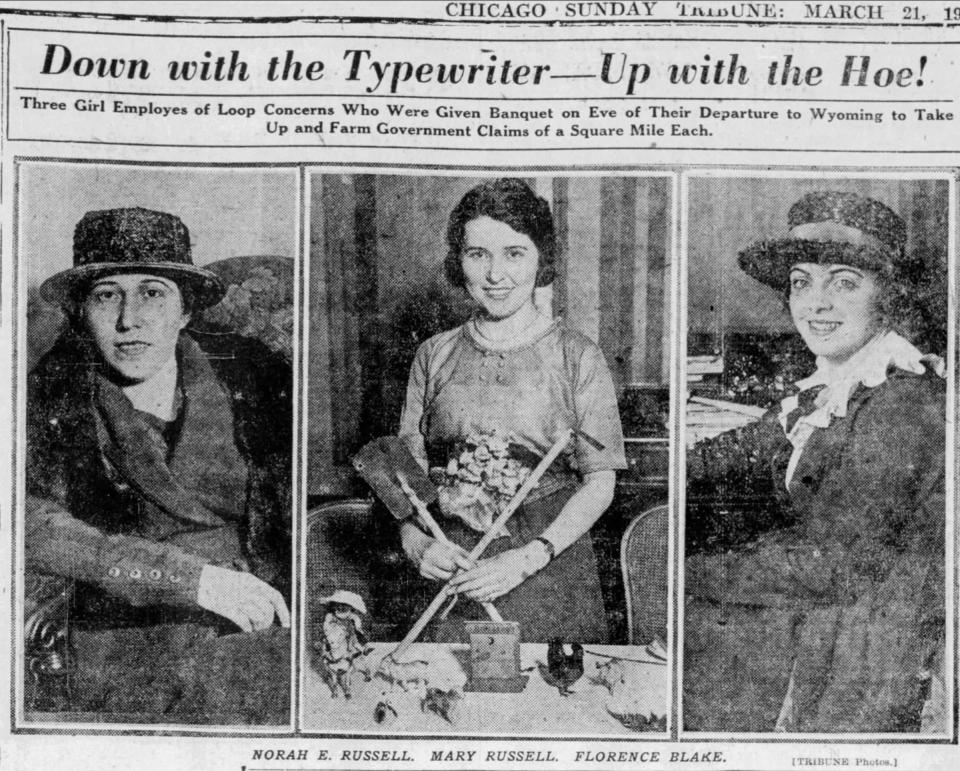- Home
- Encyclopedia
- A Woman Alone On Her Claim
A Woman Alone on Her Claim
A huge bull, “probably the King-Pin of the herd, pawed the air, blew like mad, bellowed, and acted like someone had stepped on his foot. … [W]hen he walked slowly nearer, swinging his head from side to side, and kicking up clouds of dust and throwing them over his back, I too pawed the air [and] blew back at him with a good copy of a Bronx cheer. … It had not occurred to me to become frightened. But I learned an hour later that nothing but the grace of God, who looks after fools and children, had been entirely responsible for my safety.”
That evening, the men around the supper table at the neighbor’s ranch “admitted they would not go through a pasture of bulls except on horseback.” It was 1921, and the person in this Wyoming pasture was Chicago-born Florence Blake. The owner of the bulls had assured her that they wouldn’t bother her.
The trek through the bull pasture may have been Blake’s wildest adventure in three years’ homesteading on her claim 57 miles south of Gillette, Wyoming. In 1920 Blake purchased the relinquishment of 640 acres—meaning that it was a claim on which someone else had failed to prove up. She lived on it—alone—seven months a year for the next three years, complying with the current law.
Land and the law
Land law had gone through many changes since Congress passed the Homestead Act in 1862. Starting in about 1869, with the Durbin brothers’ sheep ranching operation near Cheyenne, homesteaders had been moving to Wyoming hoping, as did others in the West, to take up government land at little or no cost, and make a living from it.
Seven new laws, or modifications of the original law, were enacted between 1862 and 1916. When Blake ran into a young male acquaintance in downtown Chicago one early fall day and heard his tale of taking up a claim in Wyoming, she determined to do the same. The most recent law affecting Blake’s ambitions was passed in 1912 and, since she didn’t have to live on her claim all year, she could spend the five coldest months in Chicago, working to finance her endeavor.
Planning her adventure
After the conversation, “I could think of nothing else but six hundred and forty acres of free, open land, and all mine someday,” she reports. “It looked more like an ideal vacation than a struggle. But of course I was looking through the wrong end of the glasses at the time. For even I was required to improve the land to the extent of $1.25 an acre.”
As friends, family and co-workers heard about Blake’s plans, they showered her with food, clothing, furniture—and envious questions. Her mother supplied “eight heavy cases” of canned and boxed food, and friends and neighbors added to her stock. For shelter, she purchased a nine-by-twelve foot portable garage, and had it shipped on the train a few days after her departure.
Arriving in Gillette
The March 21, 1920, Chicago Tribune reported that two sisters, Mary and Norah Russell, had also filed on Wyoming homesteads, and traveled on the same train with Blake. She mentions them, though not by name. They arrived in Gillette in an April snowstorm. Road conditions kept Blake in town about a month, during which she worked at various jobs. As an attorney’s secretary in a tiny office, she “might have written a ‘best seller’ had I thought about it. … What tales of infidelity, rape and wife-beating I did hear.”
She continues, “This was the great West. Life was supposed to be in the raw and plenty rough. I was only twenty-one at the time and wished for earmuffs often, to hide my confusion and what I was compelled to listen to.”
Image
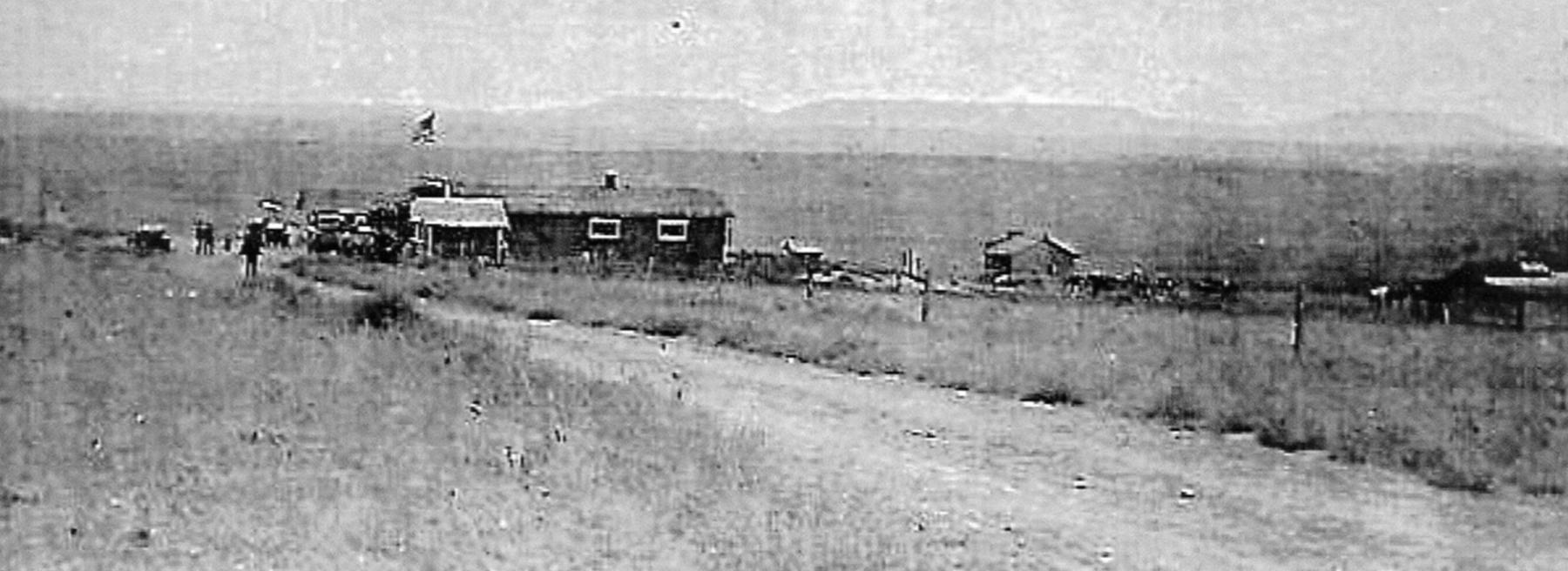
Image
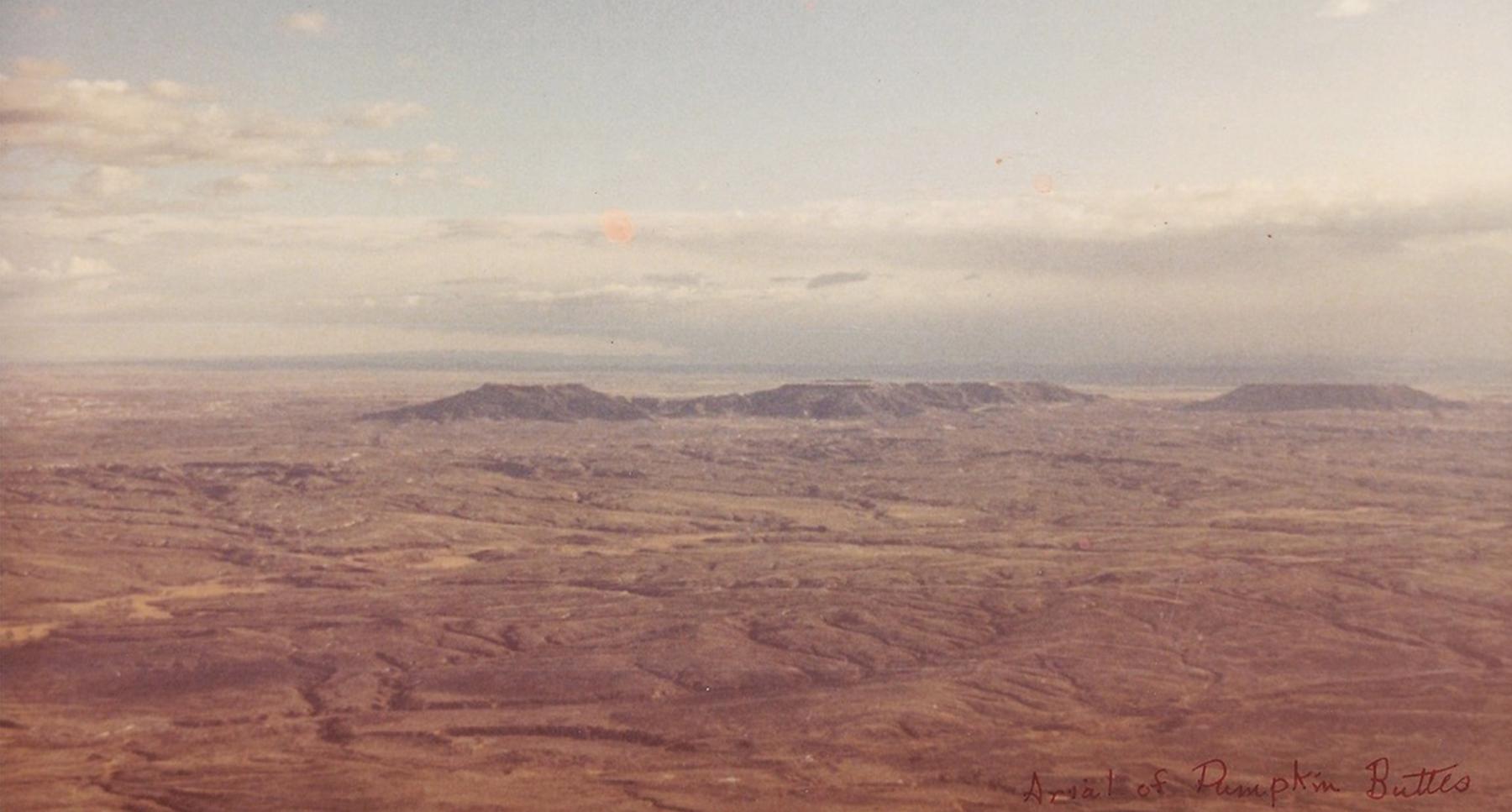
Setting up housekeeping
When the roads became passable, Blake hired two trucks, one for her portable house and the other to haul a stove and lumber for cupboards, a floor and an outhouse. The Chicago man who sold her the portable garage/house-to-be assured her that it “could easily be assembled by a woman.” However, “three husky men” needed an entire day to assemble the house, a lean-to and outhouse. The latter had no door and a good view of the nearby Pumpkin Buttes.
In a few weeks, Blake had settled into her routine. Tending her garden, hauling water from a nearby spring and various cooking experiments kept her busy. She went for a walk every evening: “I would sit cross-legged on my pet rock and watch the sun set behind the Big Horn Mountains and listen to the many birds settling down for the night. The Meadow Larks were singing their last sweet song of the day. The hills were covered with wild flowers and the air was so good and so sweet.”
The garden, she reports, “was a big pain in the neck. The rabbits ate it as promptly as it appeared above the ground.” She put up a fence. With no plumbing in the house, she never realized “how few cups of water a bucket can hold until you have walked [a] couple hundred yards to the edge of the draw, climbed down the steep steps dug into the bank, filled your bucket and climbed back up, only to have it slosh over and lose a half of it as you climb back up.” A friend later gave her a 10-gallon cream can, and “any company,” probably male, “was always willing to make a few trips to fill it.”
Image
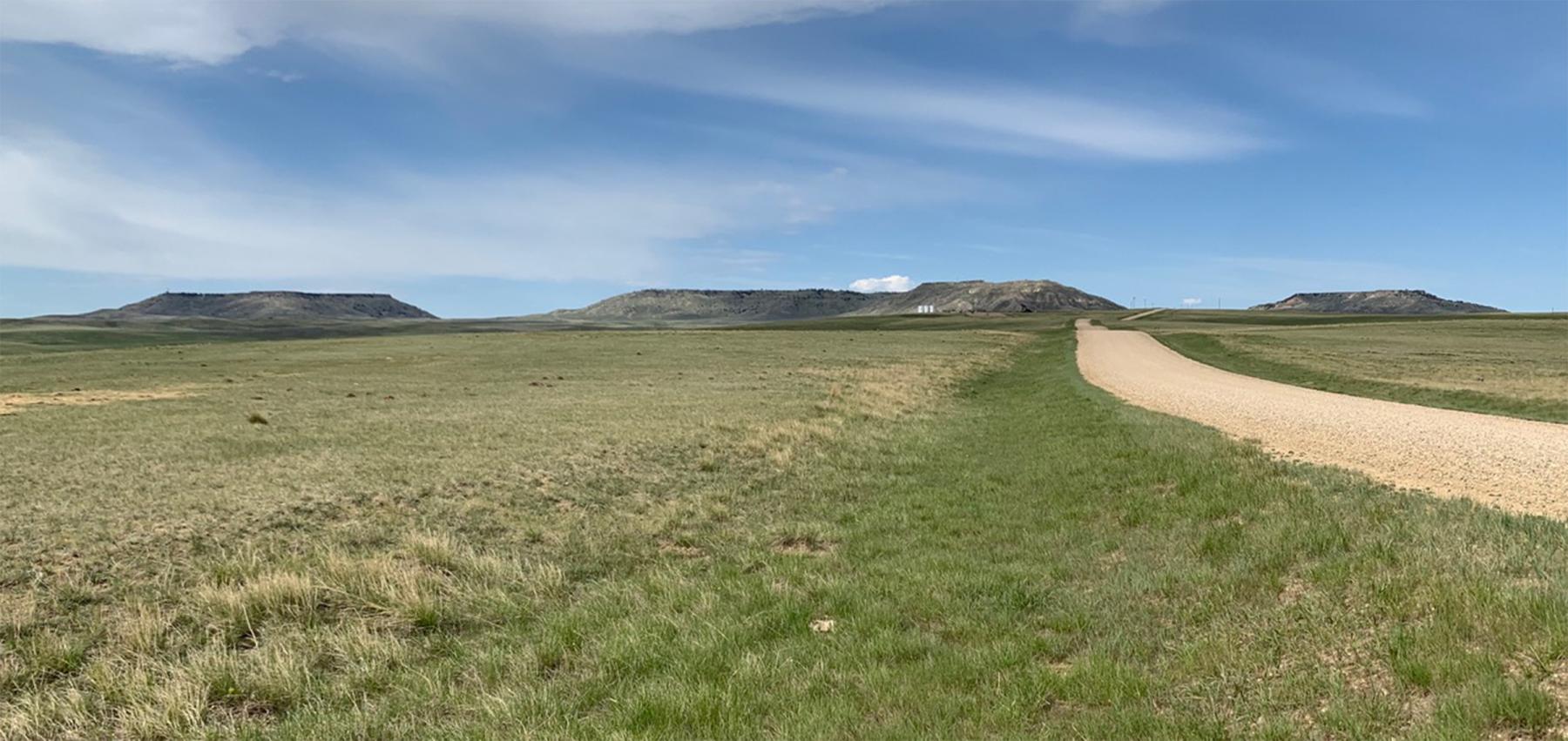
Neighbors
Her nearest neighbors, a ranch family of seven, lived two and a half miles away and became her steadfast friends. In addition, “There were dozens of ex-soldiers on claims that year. I met many of them, and they proved good friends indeed. They were always willing to bring my mail from Savageton and to see that I had plenty of wood and coal for my big box beside the stove.” (Savageton is a hamlet 32 miles south-southwest of Gillette.) Passersby, usually cowboys or ranchers, also stopped at Blake’s house to offer her a ride into Gillette. They often brought her groceries, or asked if she needed anything.
In fact, residents of the whole region appear to have showered her with the most solicitous care. Men constantly invited her to dances, which almost always lasted all night. If they stopped by to visit her, they brought food and often cooked it, helping with kitchen cleanup after the meal. In her turn, Blake always helped her neighbors when asked, but loved her small homestead so much that she stayed there as much as possible.
Planting a crop, and traveling
Required to improve her land, she “hired a man to plow and seed forty acres of wheat. He must have planted bird seed.” The crop failed, not only because the birds ate what little came up but because the ground was rocky. “I later received credit for my efforts,” she adds, “but no money. It was a dry summer.”
At the end of her second year, she dropped 320 acres from her claim because she couldn’t afford to improve that parcel. Although each year during her five months in Chicago she earned enough to finance her Wyoming time, that money mostly covered basic expenses. Still, she could somehow afford trips to Yellowstone National Park, Devil’s Tower and a ranch she called the “Horseshoe Ranch”—a working ranch west of Sheridan, Wyoming, near the Eatons’ dude ranch, some of whose staff and guests she met. Occasionally The Gillette News or Campbell County Record reported on her activities in short notices in their “neighborhood news” sections.
Coping with chilly fall weather
Near the end of each October, when she had to leave soon, “the nights were getting awfully nippy. I wore my flannel pajamas, my brother’s wool socks, and my bathrobe to bed. I did that because the house was so cold in the morning I wasn’t thawed out enough to build the fire.” The stove was too small to allow her to bank the coals. But she figured out a quick way to start a fire before getting back in bed. “With the house getting warm, sometimes I just slept on soundly, and when I would again awaken, the sun would be well over the hill to the east, the fire out, and the shack almost as cold again.”
Image
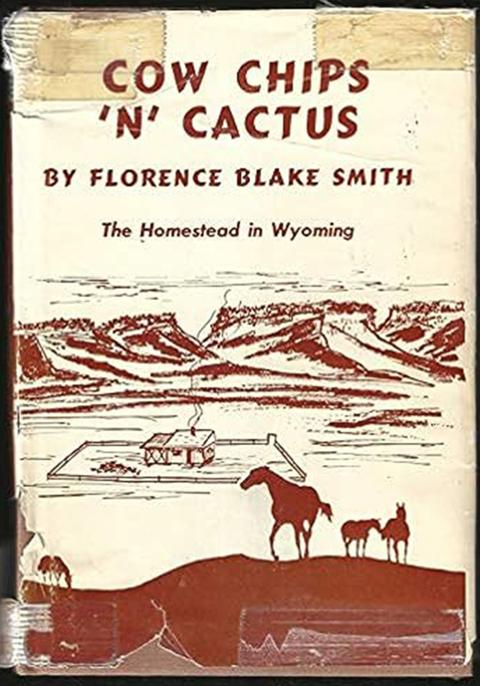
Getting married
Blake emphasizes that she didn’t mind the various privations because life in Wyoming was so much more pleasant than in Chicago. Near the end of her third year, she became engaged to Archibald Smith, a resident of Gillette and former rancher in the area. The couple settled in Cheyenne, where “Arch” had been appointed commissioner in charge of the dairy, foods and oil division for the Wyoming Department of Agriculture.
After five years in Cheyenne, Florence Blake Smith proved up, receiving the patent to her homestead. “The following year,” she writes, “our baby girl was born, and my cup of happiness was indeed full and overflowing.”
[Editor’s note: Special thanks to the Wyoming Cultural Trust Fund for support which in part made publication of this article possible].
Resources
Primary Sources
- “Girls Quit Loop Clamor to Seek Fortune in West.” Chicago Tribune, March 21, 1920, p. 5, accessed July 14, 2023 via Newspapers.com. Database available to patrons at the Natrona County Public Library, Casper, Wyoming.
- “Homesteading’s a Gay Life!” Chicago Tribune, Oct. 18, 1920, p. 10, accessed July 15, 2023 via Newspapers.com. Database available to patrons at the Natrona County Public Library, Casper, Wyoming.
- Smith, Florence Blake. Cow Chips ’n’ Cactus: The Homestead in Wyoming. New York: Pageant Press, 1962.
- United States Government, General Land Office. Land Patent 996504, Feb. 25, 1927, accessed July 13, 2023 at https://glorecords.blm.gov/details/patent/default.aspx?accession=996504&docClass=SER&sid=a15htna5.0bf.
- Wyoming Digital Newspaper Collection, accessed July 14, 2023, July 22, 2023 at https://wyomingnewspapers.org/:
- Campbell County Record, May 19, 1921, p. 5, col. 4; July 21, 1921, p. 7 col. 3.
- The Gillette News, April 23, 1920, p. 1, col. 4; June 23, 1921, p. 5, col. 2; July 14, 1921, p. 3, col. 3; Aug. 4, 1921, p. 3, col. 2.
- Wyoming State Tribune/Cheyenne State Leader, Aug. 4, 2023, p. 2, col. 3. “A. R. Smith Honored at Drug Sessions.”
Secondary Sources
- Bradsher, Greg. “How the West Was Settled: The 150-Year-Old Homestead Act Lured Americans Looking for a New Life and New Opportunities.” Prologue (Winter 2012). Archives.gov, accessed July 26, 2023 at https://www.archives.gov/files/publications/prologue/2012/winter/homestead.pdf.
- Cassity, Michael. “Wyoming Will Be Your New Home: Ranching, Farming, and Homesteading in Wyoming 1860-1960.” (Six-page timeline). Cheyenne, Wyoming: Wyoming State Parks and Cultural Resources: Wyoming State Historic Preservation Office, 2010. (Hereafter WYSHPO), accessed June 16, 2023 at https://wyoshpo.wyo.gov/homestead/pdf/timeline_053110.pdf.
- ____________. Wyoming Will Be Your New Home: Ranching, Farming, and Homesteading in Wyoming 1860-1960.(354-page “Context”). WYSHPO, 2010, accessed June 16, 2023 at https://wyoshpo.wyo.gov/homestead/pdf/historic_context_study_011311.pdf.
- Rea, Tom. Devil’s Gate: Owning the Land, Owning the Story. Norman, Oklahoma: University of Oklahoma Press, 2006, 148-167.
- Strahn, Derek. “Homestead Act Launches a New Era in Montana (Part 2 of 3).” This Is Montana. University of Montana, accessed July 26, 2023 at https://www.umt.edu/this-is-montana/columns/stories/homestead-act-part-two.php#:~:text=In%201912%2C%20Congress%20went%20even,five%20months%20of%20each%20year.
- Weidel, Nancy. Wyoming’s Historic Ranches. Charleston, South Carolina: Arcadia Publshing, 2014, 110.
Illustrations
- The 1920 Chicago Tribune photo is from Newspapers.com. Used with thanks.
- The photos of Savageton and the aerial photo of Pumpkin Buttes are from the collections of the Campbell County Rockpile Museum in Gillette. Used with thanks.
- The color photo of Pumpkin Buttes today is by Mark Fisher, from Geology of Wyoming. Used with permission and thanks.
- The image of Florence’s land patent is from General Land Office records kept by the U.S. Bureau of Land Management. Used with thanks.
- The photo of the book cover is from Amazon. Used with thanks.

